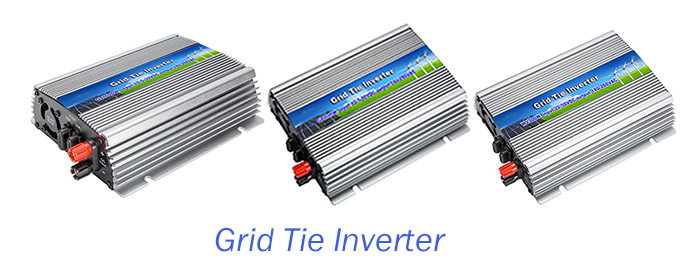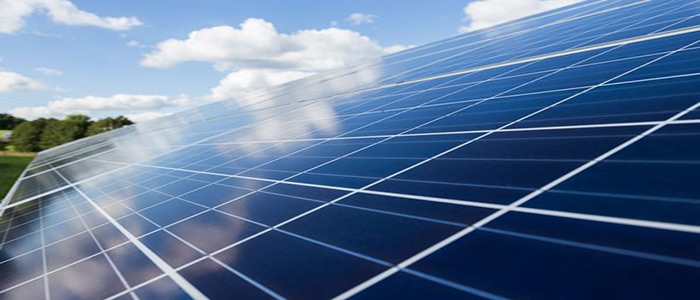As the world increasingly turns to renewable energy sources, solar power has become a prominent player in the energy landscape. One of the critical components in a solar power system is the grid-tie inverter, which converts the direct current (DC) generated by solar panels into alternating current (AC) that can be fed into the electrical grid. However, the integration of solar energy into the grid introduces various technical challenges that necessitate robust protection functions in grid-tie inverters. This article explores the protection functions of solar grid-tie inverters.

14 protection functions of on grid inverter:
1. Input overvoltage protection: When the DC-side input voltage is higher than the maximum allowable DC array access voltage of the grid tie inverter, the inverter is not allowed to start or stop within 0.1s (in operation) and a warning signal is released at the same time. After the DC-side voltage is restored to the allowable working range of the inverter, the inverter should be started and operated normally.
2. Input reversed connection protection: When the positive input terminal and negative input terminal of the solar inverter are connected in a reversed manner, the inverter should be able to automatically protect. When the polarities are correctly connected, the equipment should be able to work normally.
3. Input overcurrent protection: After the PV modules are connected in series and in parallel, each string is connected to the DC-side of the PV solar inverter. After the MPPT interference, when the input current is higher than the allowable DC maximum input current set by the inverter, the inverter (in operation) stops MPPT interference and sends a warning signal. After the DC-side current returns to the operating range allowed by the solar inverter, the inverter should be able to start and operate normally.
4. Output overcurrent protection: Overcurrent protection should be set on the AC output side of the grid-tied inverter. When a short circuit is detected on the grid side, the grid-tied inverter should stop supplying power to the grid within 0.1 s and send a warning signal. After eliminating the fault, the grid-tied inverter should work normally.
5. Output short-circuit protection: In case of the on grid inverter output short circuit, they must be short-circuit protective measures. The short-circuit protection action time of the inverter should not exceed 0.5s. After the short-circuit fault is removed, the equipment should work normally.
6. AC / DC surge protection: The solar on grid inverter should have lightning-prevention protection function, and the technical index of the lightning protection device should ensure to absorb the expected impact energy.

7. Anti-islanding protection: The grid-tied inverter should have reliable and complete anti-islanding protection function. The grid-connected inverter usually has the passive or active detection methods. Passive island protection: Detect the magnitude, frequency and phase of the grid voltage in a real-time manner. When the grid is out of power, it will generate a hopping signal on the amplitude, frequency and phase parameters of the grid voltage, and the hopping signal will be detected to judge if the grid is out of power or not. Active island protection: generate small interference signals through the timing of the inverter to observe whether the power grid is affected or not as the judgment basis, such as pulse current injection method, output power change detection method, active frequency offset method and sliding frequency offset method and so on. When the grid has power, the interference has no effect on the frequency of the grid voltage. When the grid is out of power, the interference will cause a large change in the grid voltage frequency, thereby judging whether the grid is out of power or not.
8. Output overvoltage / undervoltage, overfrequency / underfrequency protection: On the AC output side of the grid-tied inverter, the grid-tied inverter should be able to accurately determine the overvoltage / undervoltage, overfrequency / underfrequency and other abnormal conditions of the power supply grid (wiring). The grid-tied inverter should protect according to the required time. Warning signal should be issued when cutting off. When the grid voltage and frequency return to the allowable voltage and frequency range, the inverter should be able to start normally.
9. Inner short-circuit protection: When a short circuit occurs inside the grid-tied inverter, the protection of electronic circuits and fuses in the inverter should be fast and reliable.
10. Over-temperature protection: The grid-tied inverter should have over-temperature protection functions, such as too high inner ambient temperature alarm (such as the too high temperature in the case caused by fire), too high temperature of the key components in the machine (such as IGBT, Mosfet and so on).
11. Automatic recovery of the grid-connected protection: After the grid-tied inverter stops supplying power to the grid because of the fault of the grid, the grid-tie inverter should be able to automatically send power to the grid 5 min after the grid voltage and frequency return to the normal range for 20s. In power supplying, the output power should increase slowly, but not impact the grid.
12. Insulation resistance monitoring: The on grid inverter has the complete insulation resistance monitoring function. When the electrical part of the equipment is grounded, the insulation monitoring system should be able to immediately monitor the fault status of the inverter, stop and alarm. The inverter calculates PV+ and PV– grounding resistance by detecting PV+ and PV- grounding voltage. If the resistance of any side is lower than the threshold, the inverter will stop working and the alarm will display "low insulation resistance of PV".
13. Leak current monitoring and protection: The solar grid tie inverter has the perfect leak current monitoring function. In the operation process of the inverter, it monitors the leak current in real time. When the residual current monitored exceeds the following limits, the inverter should be disconnected from the network within 0.3s, and a fault signal shall be sent out: As to the inverters with rated output less than or equal to 30KVA: 300mA; as to the inverters with rated output greater than 30KVA: 10mA/KVA.
14. Zero (low) voltage traversal function: Zero (low) voltage traversal function: When the power system has an accident or interference, causing the voltage drop of the voltage at the grid connection point of the photovoltaic power station, within a certain voltage drop range and time interval, the photovoltaic power station can ensure continuous operation without grid disconnection. This function is achieved by the inverter. The cause of the voltage sag is that when a short circuit fault occurs in a branch of the power system, the current increases sharply. At this time, the protection device in the fault branch acts to isolate the fault point, so the voltage recovers. From fault generation to detection and then to disconnection, it takes a while, which will cause the voltage of each branch to suddenly drop, forming a short-term voltage drop. At this time, if the solar power station is cut off immediately, the stability of the power grid will be affected, and even other fault-free branches will be disconnected as well, thus causing a large-scale power grid blackout. At this time, the PV solar inverter is required to support for a period of time (within 1s) until the grid voltage recovers. The zero (low) voltage traversal function is suitable for large-scale ground power stations. The grid voltage level is above 10KV, and solar power is all connected to the Internet and is not directly supplied to the load. However, in distributed photovoltaic power stations, the zero (low) voltage traversal function is not required.
Importance of Protection Functions:
The protection functions of solar grid tie inverters are not just optional features; they are essential for several reasons:
- Equipment Safety: Protect the inverter and other electrical components from damage due to abnormal electrical conditions.
- Grid Stability: Ensure that the solar power system does not compromise the stability and reliability of the utility grid.
- Human Safety: Prevent electric shocks and fire hazards, ensuring the safety of maintenance personnel and the public.
- Compliance: Meet regulatory requirements and industry standards for grid-connected solar power systems.
Protection functions are an indispensable aspect of solar grid-tie inverters, ensuring the safe, reliable, and efficient integration of solar energy into the electrical grid. By mitigating risks such as overcurrent, overvoltage, undervoltage, frequency deviations, and ground faults, these protection mechanisms play a crucial role in the operation of solar power systems. As technology continues to advance, we can expect even more sophisticated and effective protection functions, further enhancing the viability of solar energy as a sustainable and reliable power source for the future.
